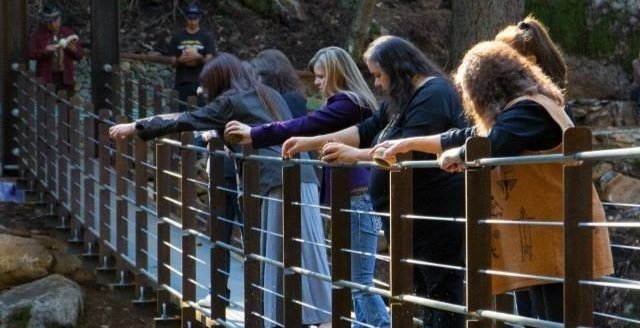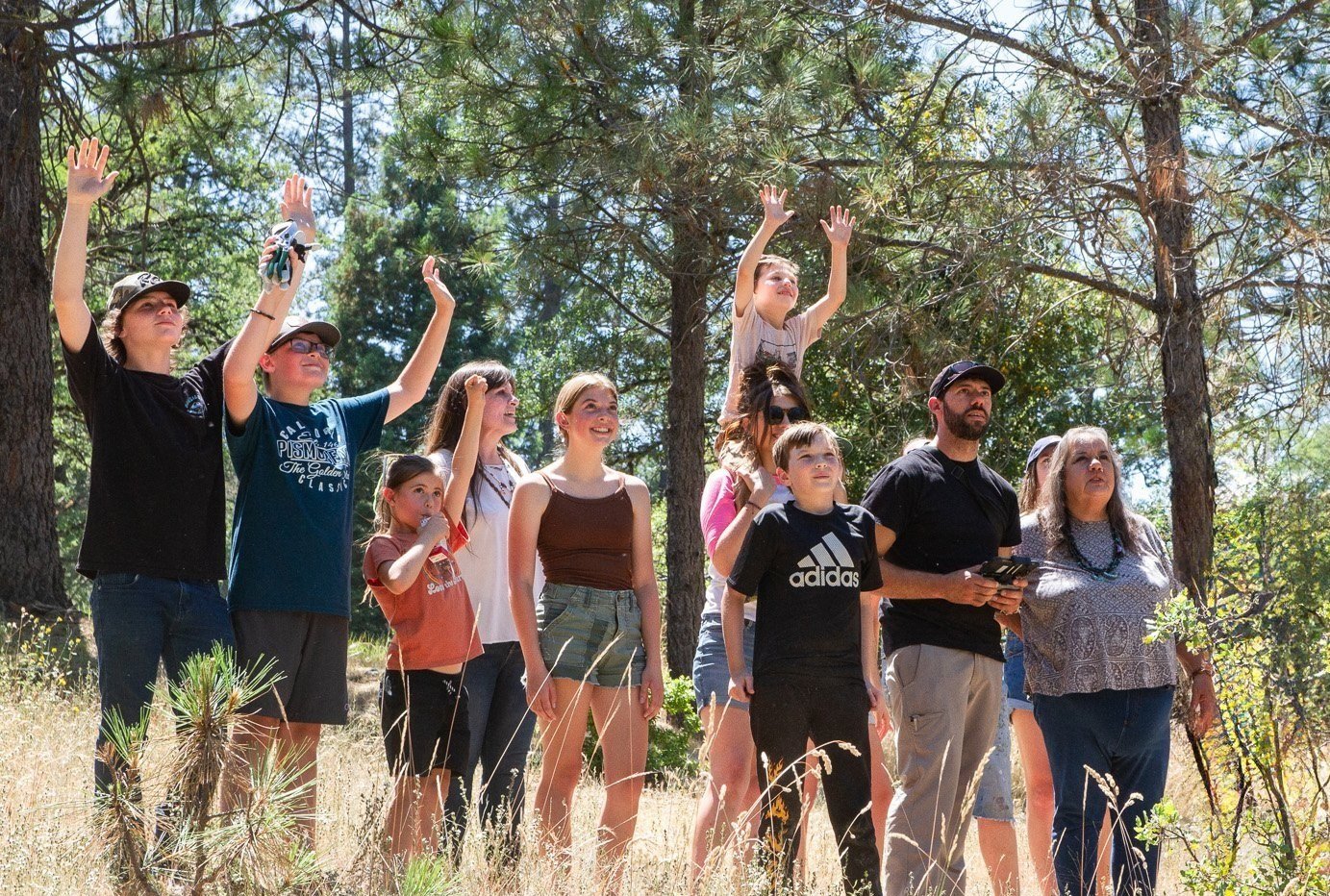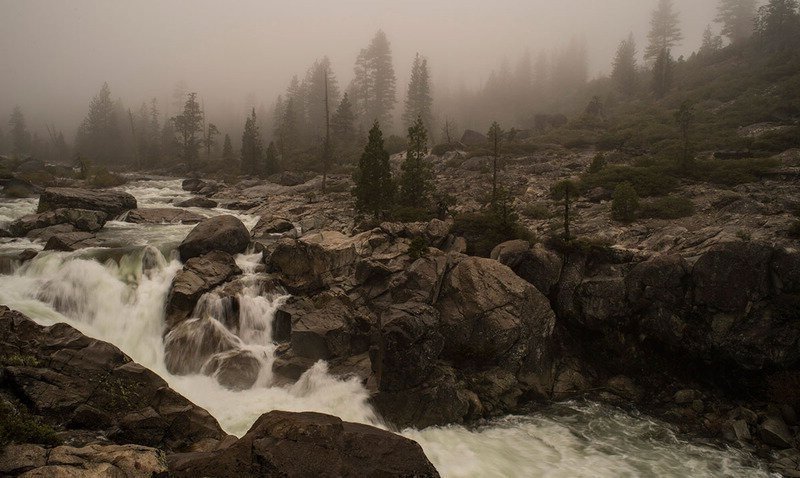
About CHIRP
and the NCR Nisenan Tribe
California Heritage:
Indigenous Research Project
California Heritage: Indigenous Research Project (CHIRP) is a Tribally-guided nonprofit dedicated to Preserving, Protecting, and Perpetuating Nisenan Culture.
Due to its illegal federal termination in 1964, the Nevada City Rancheria (NCR) Nisenan Tribe is barred from accessing federal programming and services that support Tribal communities. To address the legal vacuum created by the Tribe’s federal disbandment, CHIRP acts as proxy for the NCR Nisenan Tribe and its approximately 140 members.
Together, CHIRP and the NCR Tribal Council work to identify, fund, and implement programs and projects to address and mitigate the ongoing social, environmental and racial injustices brought to the Tribe’s Homelands in 1848, until the time when the Tribe’s federal recognition and sovereignty is restored.

CHIRP’s Mission:
To Preserve, Protect, and Perpetuate Nisenan Culture
CHIRP and the NEVADA CITY RANCHERIA NISENAN TRIBE
California Heritage: Indigenous Research Project (CHIRP) plays a crucial role in addressing the continuing consequences of the gold rush and challenges due to the Tribe’s terminated status.
Established in 2015 as a Tribally-guided nonprofit, CHIRP takes direction from the Nevada City Rancheria (NCR) Tribal Council to identify, fund, and implement programs and projects to address and mitigate the ongoing social, environmental and racial injustices brought to the Tribe’s Homelands in 1848 that continue today in the form of historical trauma, illness, poverty, substance use disorder, marginalization, and hopelessness.
As part of CHIRP's mission, Tribal members themselves are cultural resources, history holders, Culture bearers, and survivors of genocide. They stand at the center of CHIRP's work.
The people themselves are indicators for measuring CHIRP's programmatic successes and failures - they are symbolic thermometers that can measure the health and strength of Nisenan Culture, society, environment, and overall Tribal stability, indicating future survivability or extinction of a Cultural practice, perseverance of oral history, environmental knowledge, and the functionality and wellbeing of Tribal members into the future.
CHIRP program areas
As a 501c3 Nonprofit, CHIRP acts as proxy for the NCR Nisenan Tribe and its approximately 140 Tribal members, providing Cultural revitalization services, land Rematriation and stewardship efforts, Tribal visibility, and community education. CHIRP’s work also includes on-going advocacy and litigation to restore federal recognition.
CHIRP realizes its mission through five program areas: Cultural Preservation, Economic Development, Land-Back and Sacred Site Reclamation, Environmental and Human Health, and Community Outreach and Education.
These programs exist in an intersectional feedback loop that weaves each area out into the larger society and back through the Nevada City Rancheria Nisenan Tribal members.

Photograph by Sean Patrick Leydon
Nevada City Rancheria Nisenan Tribe
We Are Still Here, co-created with the Nevada City Rancheria Nisenan Tribe, the Yuba Water Agency, and South Yuba River Citizens League, explores the impact of the gold rush on the Nisenan People and their fight to save their Culture
The Nisenan (pronounced nee-see-nan or nee-she-nan) are the Indigenous people of the Sierra Nevada foothills, their territory extending from the crest of the Sierra Nevada Mountains and the north fork of the Yuba River, to the west side of the Sacramento River and the northern banks of the Consumnes River.
For over 10,000 years, the Nisenan People lived in prosperous harmony with the land and its animal kin. The earth was laden with clean water, delicious food, strong medicine, pure spirit, sacred grounds, and vast-interconnected species of animals - deer, elk, wolves, bear - and the waterways brimmed with crayfish, eel, trout, and seasonal salmon. The Nisenan stewarded forests of pine, cedar and sacred oak trees, and valleys rich in willow, wildflowers and native grasses.
The Nisenan, whose name means “from among us” or “from this side” were a vibrant, sophisticated nation of people who identified themselves by their village names and by their language and dialect. They were highly sought after healers and holy people, known for their beautiful, water tight basketry, and maintained extensive trade-relationships with tribes throughout the area now known as Northern California.
Through deep relationship with the land, the Nisenan people prospered in great wealth, rich culture, and stable social fabric. For the Nisenan, this land was a true Paradise.
The Loss of Nisenan Homelands
The gold rush marked the end of the ancient Nisenan lifestyle and the ability of the Nisenan to thrive on their own land. The massive influx of gold miners and settlers created competition for resources (food and medicinal plants), destruction of the environment and persecution of the Native people, ultimately forcing consolidation of many Nisenan villages in the mid-1800s into one area in Nevada County.
In 1887, Tribal Chief Charley Cully obtained a federal land allotment protecting 76 acres of Nisenan land on Cement Hill. It was his hope to secure a home for his people forever. In 1913, this land was converted by President Woodrow Wilson into the Nevada City Rancheria by executive order. Nevada City Rancheria is still a name used to identify the Tribe of Nisenan who are descended from the families that lived there.
Following the U.S. Congressional enactment of the Rancheria Act of 1958, which disbanded the Rancheria System in California, the United States illegally “terminated” the Nevada City Rancheria in 1964, revoking individual rights and status afforded to “Indians.” The U.S government sold the reservation land at auction, and left the Nisenan homeless.
Of the 40+ Tribes throughout California that were terminated under that Act, today only three of those congressionally terminated Rancherias have not been restored. Despite decades of significant legal efforts by the Tribe, the Nevada City Rancheria remains one of the tribes in a “terminated” state. It is therefore barred from accessing Federal Indian programs and funding for housing, education, health, and economic sustainability.

What is “Lateral Violence”?
Nisenan Heritage Day in November
This year, we will not hold an in-person Nisenan Heritage Day as CHIRP and Tribal Members are intensely focused on settling into the newly acquired Homelands. However, we invite the community to celebrate with us and continue learning virtually. Stay tuned to our social media channels for updates.
You can also support and engage in a Reciprocal Relationship with the Nevada City Rancheria Nisenan Tribe through the Ancestral Homelands Reciprocity Program.

By supporting CHIRP, through donations, volunteer work, and spreading visibility of Nisenan history and culture, our allies and advocates contribute to the healing of historic injustices, Indigenous land rematriation, and Cultural revitalization of the Nisenan People
